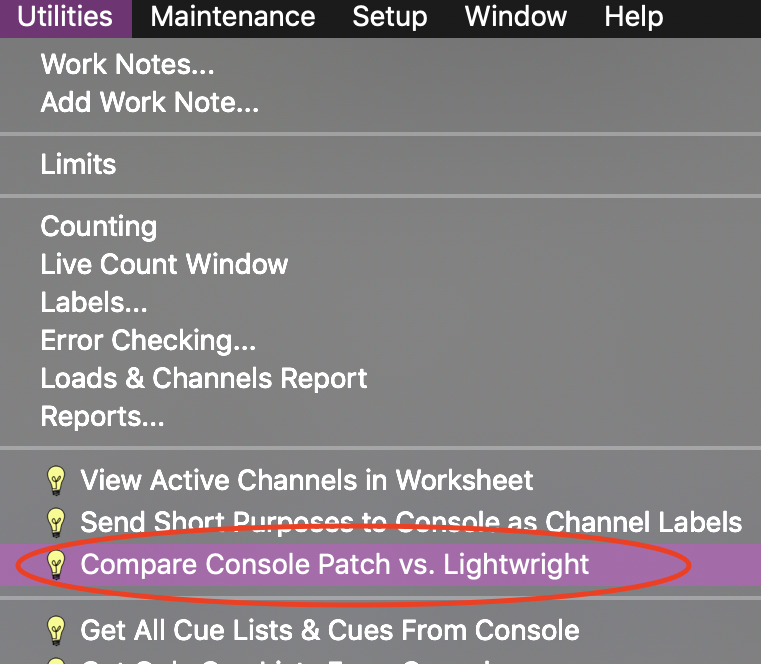Automated Import and Export to Lightwright
The lighting instruments and parameters specified in the Vectorworks Spotlight product can be automatically sent to Lightwright versions 5 and later to perform paperwork processing. Any changes to the data in Lightwright automatically update the light plot. Once configured (and once the Vectorworks file has been saved), these updates occur seamlessly in both applications.
- Lightwright 6 is an iconic industry standard on Broadway and in other areas of live entertainment, and was created to help designers and electricians record and keep track of the vast amount of data needed to install and maintain a lighting installation. As the lighting world has increased in complexity due to the proliferation of moving lights and LEDs, the organizational demands on lighting.
- Lightweight definition is - one of less than average weight; specifically: a boxer in a weight division having a maximum limit of 135 pounds for professionals and 132 pounds for amateurs.
Lightwright is a unique cross between a spreadsheet and a database, designed specifically to manage professional lighting design paperwork. Lightwright understands what designers and electricians do with their paperwork.
For versions of Lightwright earlier than 5, see the documentation for that version of Lightwright.
To specify automatic data transfer between the Vectorworks Spotlight product and Lightwright:
Select File > Document Settings > Spotlight Preferences.
Click Use automatic Lightwright Data Exchange to enable automatic data transfer between the Vectorworks Spotlight product and Lightwright, and indicate the location for saving the transfer file.
Move fields to be exported from the Available Fields list to the Export Fields list. All parameters in the Export Fields list are exported to Lightwright.
Click OK to close the dialog box and export the instrument and accessory information from the Vectorworks file to the exchange file.
The Spotlight Preferences dialog box opens. Click the Lightwright tab.
Parameter | Description |
Use automatic Lightwright Data Exchange | Enables the automatic exchange of data between the Vectorworks Spotlight product and Lightwright; deselect to suspend or stop the data exchange |
Perform a complete export on exit | Exports the Spotlight data, replacing all the data in Lightwright the next time Lightwright is used. This should occur whenever field export changes have occurred; therefore, when changes have been made, the field appears dimmed and cannot be deselected. |
Include Inventory | Select to include inventory data in the data transfer. An updated instrument types inventory list, which is controlled by the Lighting Inventory Setup command, is sent to Lightwright when the Lightwright data exchange performs a complete export and when lighting inventory is updated (see Lighting Inventory Setup and Inventory Reports). Only instruments types with a count of one or more are sent to Lightwright. Inventory updates from Lightwright are processed with the other instrument data. Instrument summaries are updated automatically if Show Counts and Compare to Inventory are selected in the Instrument Summary Settings dialog box for the placed objects. |
File Path | Specifies the location of the exchange file. The file is in .xml format, and it is named according to the Vectorworks file. |
Same location as the file | Saves the exchange file with the Vectorworks file |
A custom location | Saves the exchange file in a specific location; click Choose to set the location |
Available Fields | Lists field names from the Vectorworks file that are available to export to Lightwright, but have not been selected for export |
Move > | Moves the selected Vectorworks file field to the Export Fields list for export to Lightwright |
< Move | Removes field names from the Export Fields list, returning them to the Available Fields list, where they are not included for export |
Export Fields | Lists field names that will be exported to Lightwright |
Reset Defaults | Restores the fields to the lists specified as a default when Save as default was last clicked |
Save as default | Saves the current lists as the default mapping to be restored by Reset Defaults; the default settings saved include those on the Lighting Device and Universe tab |
Click Save as default to save the current status of the lists for new Vectorworks files. When enabling data exchange, click Reset Defaults to use the default lists.
As instruments are added, deleted, and changed in the Vectorworks Spotlight product, the edits appear in Lightwright. Similarly, edits made in Lightwright apply automatically to the Vectorworks file. Instrument data are updated when the file focus switches from the Vectorworks file to Lightwright, or Lightwright to the Vectorworks file.
Lights added in Lightwright are placed between existing lights on a lighting position upon import, based on the unit number of the new light. If no adjacent lights can be determined, the light is placed at the center of the lighting position.
In the Vectorworks file, an import worksheet is automatically created, listing instruments that have been added from Lightwright as well as instruments that did not have a Lightwright equivalent and should possibly be deleted from the Vectorworks file.
Right-click (Windows) or Ctrl-click (Macintosh) on a database row of the import worksheet, and choose Select Item to select and display the associated instrument.
~~~~~~~~~~~~~~~~~~~~~~~~~

Lightwright understands what designers and electricians do with their paperwork. It knows that dimmers and circuits shouldn't be overloaded, that striplights have more than one color, it organizes your worknotes, and provides tools to design color scrolls and specify moving light wheels. It can find mistakes, reconcile two sets of paperwork, figure circuit and dimmer needs, renumber or rearrange channels and dimmers, and assign dimmers automatically. You can use footnotes and ditto marks to cut down on typing and wasted paper.
Lightweight Travel Trailers

Lightwright
